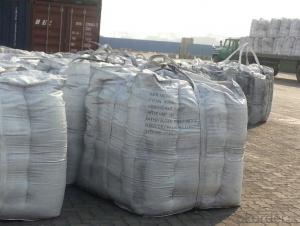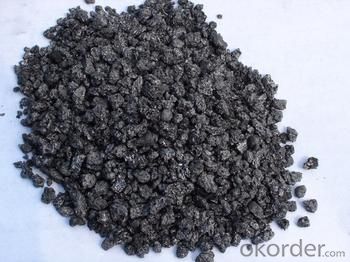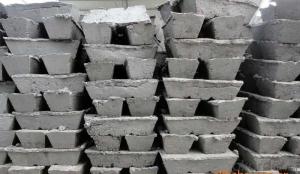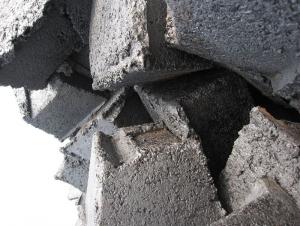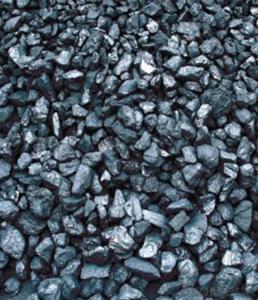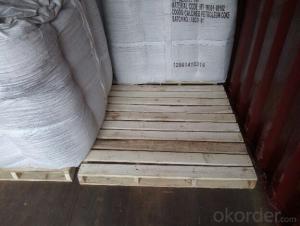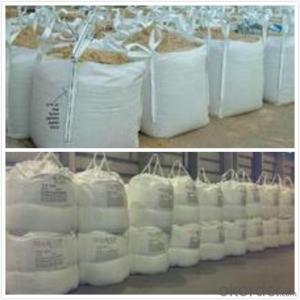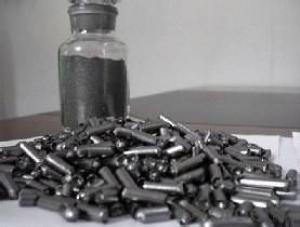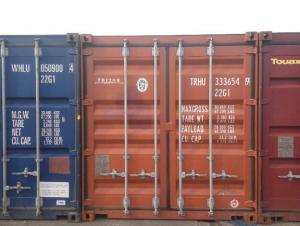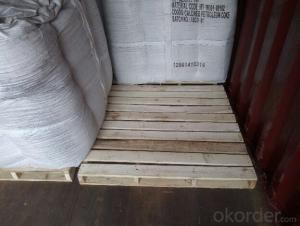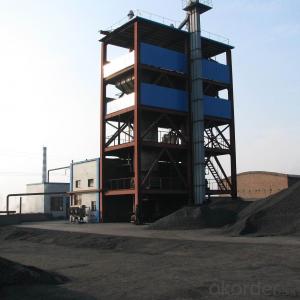Calcined Petroleum Coke/Graphite Recarburizer for Steel-Smelting
- Loading Port:
- Tianjin
- Payment Terms:
- TT OR LC
- Min Order Qty:
- 1 m.t.
- Supply Capability:
- 10000000 m.t./month
OKorder Service Pledge
OKorder Financial Service
You Might Also Like
1.Structure of Calcined Petroleum Coke Description
Calcined Petroleum Coke is made from raw petroleum coke,which is calcined in furnace at a high temperature(1200-1300℃).CPC/Calcined Petroleum Coke is widely used in steelmaking,castings manufacture and other metallurgical industry as a kind of recarburizer because of its high fixed carbon content,low sulfur content and high absorb rate.Besides,it is also a best kind of raw materials for producing artifical graphite(GPC/Graphitized Petroleum Coke) under the graphitizing temperature(2800℃).
2.Main Features of the Calcined Petroleum Coke
High-purity graphitized petroleum coke is made from high quality petroleum coke under a temperature of 2,500-3,500°C. As a high-purity carbon material, it has characteristics of high fixed carbon content, low sulfur, low ash, low porosity etc.It can be used as carbon raiser (Recarburizer) to produce high quality steel,cast iron and alloy.It can also be used in plastic and rubber as an additive.
3. Calcined Petroleum Coke Images
4. Calcined Petroleum Coke Specification
Type | Chemical Composition(%) | ||||
F.C. | Ash | V.M. | S | Moisture | |
min | max | ||||
WEB-CA/CR-95 | 95 | 4.5 | 1 | 0.25 | 0.3 |
WBD-CA/CR-94 | 94 | 5 | 1 | 0.25 | 0.3 |
WBD-CA/CR-93 | 93 | 6.5 | 1.2 | 0.3 | 0.5 |
WBD-CA/CR-92 | 92 | 7 | 1.2 | 0.3 | 1 |
WBD-CA/CR-90 | 90 | 8.5 | 1.5 | 0.35 | 1 |
Size(mm) | 0.5-3,1-4,0.5-4,1-3,0-20,90%min;or at custom's option. | ||||
Type | Chemical Composition(%) | ||||
F.C. | Ash | V.M. | S | Moisture | |
min | max | ||||
WEB-GS-99.2 | 99.2 | 0.5 | 0.5 | 0.04 | 0.5 |
WBD-GS-99.0 | 99 | 0.5 | 0.5 | 0.05 | 0.5 |
WBD-GS-98.5 | 98.5 | 0.8 | 0.7 | 0.05 | 0.5 |
WBD-GS-98.0 | 98 | 1 | 1 | 0.05 | 0.5 |
Size(mm) | 0-0.5,0-1,0.5-5,1-5,3-8,5-10,5-15; | ||||
Packing | In 1000kgs big bag. | ||||
5.FAQ of Calcined Petroleum Coke
1). Q: Are you a factory or trading company?
A: We are a factory.
2). Q: Where is your factory located? How can I visit there?
A: Our factory is located in ShanXi, HeNan, China. You are warmly welcomed to visit us!
3). Q: How can I get some samples?
A: Please connect me for samples
4). Q: Can the price be cheaper?
A: Of course, you will be offered a good discount for big amount.
- Q: Are carbon fibers organic polymer materials?
- No, carbon fiber is not an organic polymer material, and carbon fiber is an inorganic polymer materialOrganic polymer compounds referred to as polymer compound or polymer, also known as polymer is composed of one or several structural units repeatedly (103~105) compound repeat connected. Their elements are not many, mainly carbon, hydrogen, oxygen and nitrogen, but the molecular weight is large, generally above 10000, high millions.
- Q: What are the benefits of carbon fiber?
- Carbon fiber "an hand in a velvet glove lighter than aluminum," the quality, but the strength is higher than that of steel, and has the characteristics of corrosion resistance, high modulus, in the national defense and civilian areas are important materials. It has not only the intrinsic characteristics of carbon materials, but also the softness and processability of textile fibers. It is a new generation of reinforced fiber.
- Q: Is graphite carbon?
- They are arranged in eight planes. The net shape is the diamond, which is arranged in a regular hexagon and a layer, and then graphite is formedDiamond and graphite are carbon elements
- Q: How does carbon occur in nature?
- Various forms of carbon occur naturally in nature and it is one of the most abundant elements on Earth. It can be found in the atmosphere, the Earth's crust, and living organisms. In the atmosphere, carbon primarily exists as carbon dioxide (CO2), which is produced through natural processes like respiration, volcanic activity, and the decay of organic matter. Plants absorb this CO2 during photosynthesis to generate energy and release oxygen. Carbon is also present in other greenhouse gases like methane (CH4), which is produced by natural processes such as the decomposition of organic matter in wetlands and the digestive processes of certain animals. In the Earth's crust, carbon is present in various minerals like limestone, dolomite, and graphite. These minerals form over millions of years through the accumulation of marine organisms, such as shells and skeletons. Carbon is also a vital component of fossil fuels like coal, oil, and natural gas, which are formed from the remains of ancient plants and animals subjected to high pressure and temperature over time. Additionally, carbon is an essential element for all living organisms and serves as the foundation of organic chemistry. It is the primary component of organic matter, including carbohydrates, proteins, lipids, and nucleic acids, which are the building blocks of life. Through processes like photosynthesis, respiration, and decomposition, carbon cycles continuously within ecosystems. In conclusion, carbon occurs naturally in different forms in the environment and plays a critical role in the Earth's climate system, geological processes, and the sustenance of life.
- Q: What are the impacts of carbon emissions on the stability of coastal areas?
- Carbon emissions have significant impacts on the stability of coastal areas. The primary consequence is the acceleration of global warming, leading to rising sea levels and increased frequency and intensity of coastal storms. This combination results in erosion, coastal flooding, and loss of land, endangering ecosystems, infrastructure, and human settlements. Additionally, carbon emissions contribute to ocean acidification, harming marine life and disrupting delicate coastal ecosystems. Therefore, reducing carbon emissions is crucial to mitigate these adverse effects and ensure the long-term stability of coastal areas.
- Q: How is carbon used in the production of rubber?
- Carbon is widely used in the production of rubber due to its unique properties and its ability to enhance the overall quality and performance of rubber products. Carbon black, a form of elemental carbon produced by the incomplete combustion of hydrocarbons, is a key component in rubber manufacturing. Carbon black is added to rubber formulations to improve its strength, durability, and resistance to wear and tear. It acts as a reinforcing agent, providing increased tensile strength and abrasion resistance to the rubber. Carbon black particles interlock with the rubber polymer chains, reinforcing the overall structure of the material and making it more resilient. Additionally, carbon black helps improve the conductivity of rubber, making it useful in applications where electrical conductivity is required. It also enhances the UV resistance of rubber, protecting it from degradation caused by sunlight exposure. Carbon black can also improve the coloration and appearance of rubber products, giving them a deep black color. Furthermore, carbon black can be used as a filler in rubber compounds, reducing the overall cost of production while maintaining or even improving the mechanical properties of the rubber. By replacing a portion of the more expensive rubber polymer with carbon black, manufacturers can achieve cost savings without sacrificing the desired performance characteristics of the rubber. Overall, carbon plays a crucial role in the production of rubber by enhancing its strength, durability, conductivity, UV resistance, and appearance. Without carbon, rubber products would not possess the desired properties necessary for their intended applications.
- Q: What is the relationship between carbon emissions and deforestation?
- The relationship between carbon emissions and deforestation is that deforestation contributes significantly to carbon emissions. When trees are cut down or burned, the stored carbon within them is released into the atmosphere as carbon dioxide (CO2), a major greenhouse gas. This process directly contributes to climate change and global warming. Additionally, deforestation reduces the Earth's capacity to absorb CO2 through photosynthesis, further exacerbating the carbon emissions problem. Therefore, reducing deforestation is crucial in mitigating carbon emissions and combating climate change.
- Q: What are the properties of carbon-based adhesives?
- Carbon-based adhesives have several properties that make them versatile and widely used in various industries. Firstly, carbon-based adhesives are known for their excellent bonding strength. They have the ability to create strong and durable bonds between different materials, including metals, plastics, ceramics, and composites. This makes them suitable for applications where a reliable and long-lasting bond is required. Another important property of carbon-based adhesives is their high temperature resistance. They can withstand extreme temperatures without losing their adhesive properties, making them ideal for applications in high-temperature environments. This property also allows carbon-based adhesives to be used in industries such as aerospace and automotive, where components are subjected to elevated temperatures. Carbon-based adhesives also possess good chemical resistance, meaning they can withstand exposure to various chemicals without degradation. This property makes them suitable for use in industries where adhesives may come into contact with solvents, fuels, or harsh chemicals. Additionally, carbon-based adhesives exhibit excellent electrical conductivity. This property allows them to be used in applications where electrical or thermal conductivity is required, such as in the electronics industry. Furthermore, carbon-based adhesives often have low shrinkage and low outgassing characteristics. This means that they do not significantly change in size or release volatile substances during curing, minimizing the risk of damage or contamination to surrounding materials. Overall, carbon-based adhesives offer a combination of high bonding strength, temperature resistance, chemical resistance, electrical conductivity, and dimensional stability, making them a preferred choice in various industries where reliable and durable bonding solutions are needed.
- Q: How is carbon used in the production of nanoelectronics?
- Carbon is used in the production of nanoelectronics due to its unique properties. It can be structured into nanoscale materials like carbon nanotubes and graphene, which possess excellent electrical conductivity and mechanical strength. These carbon-based materials are utilized in various components of nanoelectronic devices, such as transistors and sensors, to enhance their performance and efficiency.
- Q: The difference between double offset paper and carbon free printing paper
- The use of the two is entirely different.Double offset paper is a printing paper. It is a higher quality printing paper. The contrast, flexibility and surface strength have higher requirements, and the acidity and basicity of the paper should be close to neutral or weak alkaline.Double gummed paper refers to printing paper, also called offset paper. Culture, printing paper paper one of the typical representative, in the business of two-sided offset paper (two-sided offset paper) commodity name, the old road / Taiwan area with a ream of paper, also called die rough paper.Carbon free copy is just typing paper and coating. Paint is divided into two kinds, one kind of colored, one kind of colorless.
Send your message to us
Calcined Petroleum Coke/Graphite Recarburizer for Steel-Smelting
- Loading Port:
- Tianjin
- Payment Terms:
- TT OR LC
- Min Order Qty:
- 1 m.t.
- Supply Capability:
- 10000000 m.t./month
OKorder Service Pledge
OKorder Financial Service
Similar products
Hot products
Hot Searches
Related keywords
